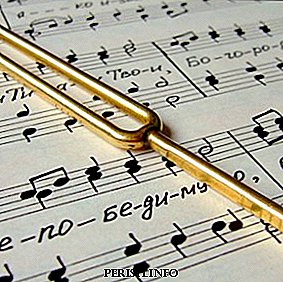
This article is a bit unusual. It is intended for those whose hobby is a crossword puzzle and a crossword puzzle, but, in general, it will be useful for novice musicians as well. Here will be given the names of musical intervals. Just in case (if anyone is interested) I will say that interval in music is combination of two soundsthat are played (well, or sung) simultaneously or alternately.
In crosswords and skanvordakh often meets this question: the musical interval. Well, having counted the number of cells, a normal person, not being a musician, will turn first to those he sees, and after that, if no one has suggested, to the Internet with a query like this: musical interval of 6 letters or musical interval of 4 letters - it's pretty trite. You will receive the exact answer to this question right now.
So, the names of the musical intervals:
musical interval 4 letters - nona
musical interval 5 letters - prima
musical interval 6 letters - third, fourth, fifth, sixth, octave, well, and one more - decime
musical interval 7 letters - second, septim
musical interval 8 letters - undecym
musical interval 9 letters - duodecim
musical interval 10 letters - tertsdetsima
musical interval 11 letters - Quartendame
That's all! However, do not rush to leave the pages - further material for the curious. Let's understand at the same time what the given names mean. Everything is very simple here - they mean the degree of “span”, “latitude” of the interval, namely the number of steps covered by this interval. The wider the interval, the further the two notes are removed in height from each other.
Imagine a piano keyboard. After all, we can play two notes on it so that they will be located on adjacent keys or through one key, after two and after three, or even just repeat the note on the same key (and this will also be an interval).
Interval Names come from nowhere, it's nothing more than ordinal numbers in Latin from 1 to 15. And the name of the interval depends on the number of steps (keys) that fit into it. Here is what this series will look like: prima (1), second (2), third (3), quart (4), fifth (5), sixth (6), septima (7), octave (8), nona (9), decime (10), undecim (11), duodecim (12), tertsdetsim (13), quartetsim (14), quintdecim (15).
If you encounter an interval for the first time, then this information is enough for you. Read more about the intervals in the music in a separate article. Let's do something else at the same time. We look at all the image to the article (under the title). What is depicted on it? Some notes and a strange plug. it fork - A musical instrument that is revered for the standard of sound. His two “twigs” oscillate with frequency when struck. 440 times per second and at the same time make a sound "la" the first octaveimagine? The notes that lie under the tuning fork are a choral score, and not by chance: the tuning fork is used by conductors in order to give the correct tuning to the chorus in a certain tone.
Now, perhaps, everything. If you want to become musically literate, begin to study musical notation - read the article "Basics of musical notation." Yes, I almost forgot, a surprise for me is a musical pause. Today we are listening to an amazing thing - the musical joke of the classy balalaika virtuoso Alexei Arkhipovsky.
Alexey Arkhipovsky (balalaika) - "Bar organ"
Up

Leave Your Comment